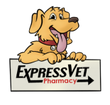Our dogs’ mouths is one area that a lot of pet owners don’t pay too much attention to. As long as their breath isn’t abnormally bad, then we tend to think everything is just fine. Although a vet may give their teeth a quick visual exam, many pet owners do not take the same care with their dog’s teeth as they do with their own. No six month or even yearly cleanings for most pups and probably no daily brushing.
The problem is, despite our four legged friends not (hopefully) stuffing their faces with sugary snacks that will rot their teeth like our kids might, our dogs’ mouths can come into contact with lots of different things. Just think how many different questionable substances or objects your dog licks just to check out and see if it’s “safe” or tasty.
For this reason, and just through its day to day normal function, your dog’s mouth can become home to disease. In fact, according to WebMD, dogs are five times more likely to get gum disease than their human owners.
But it’s not only disease that can cause your pup’s mouth and teeth to hurt, they can crack a tooth, get a cavity, and have plaque build up all in the same way that we can. And think how worse off your own teeth would be if you didn’t brush twice daily.
Reasons for Dog Tooth Pain
We’ve mentioned before in our articles how dogs can be notoriously clever when it comes to covering up any pain they are experiencing. And even if they did want to let us know where it hurts, they aren’t able to voice their discomfort and let us know what is going on like a fellow human can. Well the same goes for tooth pain in dogs.
Tooth pain in dogs can develop from a range of different reasons. Common causes of tooth pain include infected or swollen gums, a broken tooth, plaque or tartar build up, and cavities. Furthermore, just like in humans, if you ignore a tooth or gum problem or fail to notice it, it can quickly develop into a much larger issue and cause your pup a lot more pain.
Whatever the cause of your dog’s tooth ache or pain, it’s extremely important to recognize the signs so you can take care of the problem quickly. If you’ve ever had bad or even just mild tooth pain, then you understand how annoying and uncomfortable it can be.
How to Tell If Your Dog Has Tooth Pain
As we said, recognizing pain in your dog can sometimes be easier said than done. In the majority of cases, dogs will not let a painful mouth stop them from eating their meals or from carrying out any of their other normal daily tasks or activities. In the rare cases that your dog goes to the food bowl and doesn’t eat, this could be a sign of a severe dental problem or disease. You should note, however, that this can also be indicative of a problem or disease further down in the digestive tract.
Here are some things to watch out for that may indicate your dog is experiencing tooth pain or other mouth issues:
· Slow, Deliberate Chewing – Although your dog will not typically stop eating even if they have tooth pain, they may show signs of slow, deliberate chewing, chewing preferentially to one side of the mouth or the other, or even swallowing food whole without chewing at all. If your dog has tooth pain, they may also drop food on the floor while chewing.
· Worse than Normal Breath – Although many of our canine friends have less than fresh breath normally, healthy dogs shouldn’t have excessively bad breath. If you notice a change in how their breath smells or if it is smelling exceptionally bad, then it could be an indication that your dog is having a problem with their teeth or is experiencing tooth pain.
· Your Dog Is Drooling More than Usual – Similar to in humans, when dogs have tooth pain saliva can build up in their mouth and lead to excessive drooling. The reason for this is that the salivary glands work overtime whenever there’s an injury or pain in the mouth. In some cases, blood may even be visible in your pet’s saliva. If this is the case, bring your dog in to see the vet as soon as possible.
· Scratching the Side of their Face – Dogs that have infected or abscessed teeth are more likely to paw, scratch, or rub one side of their face to relieve pain and pressure.
· Swelling of the Face or Eyes – Tooth infections in dogs can cause inflammation in the area surrounding the tooth, even extending to the face and around the eye. If your dog’s face is suddenly swollen, carefully look inside the mouth for additional inflammation and redness.
· Unusual Shyness – If your dog is like most dogs, they love to be petted, especially on their head. If they suddenly stop wanting you to touch their head or move away from your hand, it could mean that they have a toothache. They are most likely shying away from your hand for fear of increased pain.
How to Prevent Tooth Pain in Dogs
Although you can’t necessarily prevent your dog from breaking a tooth, you can prevent dog tooth pain in a few other ways. The best way to stop pain from oral disease is by maintaining oral hygiene. This will help prevent cavities, tooth decay, and gum disease.
Here are some ways to keep your dog’s teeth clean and prevent tooth pain:
· Bring your dog to the vet for oral examinations and teeth cleanings
· Brush his or her teeth every day or as often as you can
· Provide your dog with chew toys to play with
· Be mindful of your dog’s breath, and if they are chewing weird or drooling more than normal
At the end of the day, dogs will show several signs when suffering from an infected tooth or other oral issues, including pain, swelling, difficulty chewing, and bad breath. If you suspect your dog has an infected tooth or other issue, you should make an appointment to see a veterinarian as soon as possible.
If your vet prescribes any medications for your dog’s tooth pain, remember you can get everything your pet needs at ExpressVet Pharmacy.






